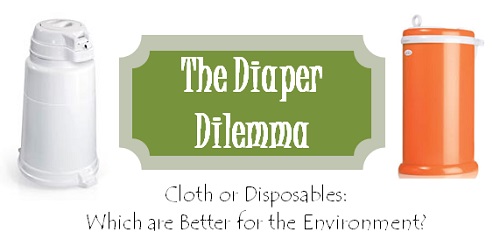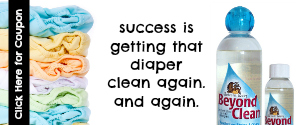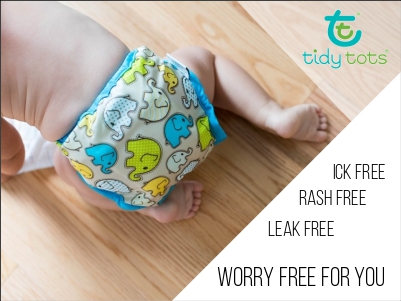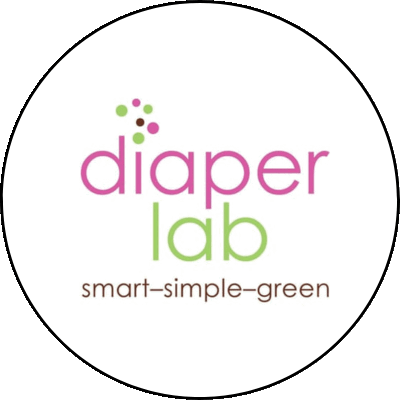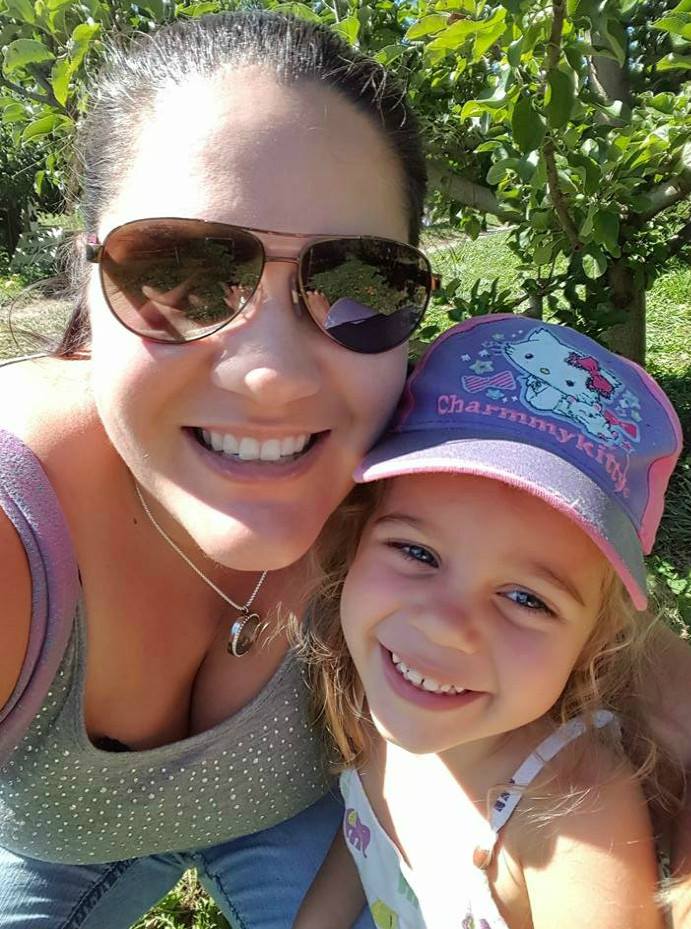Eco Friendly Diapers: Cloth vs Disposable
Are cloth diapers better for the environment? If you're looking
for eco friendly diapers, you'll soon find that the environmental debate
is perhaps the most controversial of all of the discussions for cloth
diapers.
Most of the controversy is fueled by conflicting
research funded by the manufacturers of disposable and cloth diapers,
each with conclusions finding their own product to be a better for the environment. While environmental organizations side against
disposable diapers, neither the American Academy of Pediatrics nor the
Environmental Protection Agency have taken a position.
On
Environment Canada's website, they claim that "effluents from the
disposable diaper manufacturing process (plastic, pulp, and bleached
paper) are more damaging than the cotton and hemp growing and
manufacturing process used for cloth diapers."
The eco friendly diaper arguments center around:
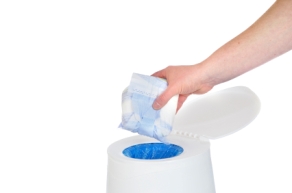
- Chemical Emissions
- Landfill Contributions
- Energy Consumption
- Water Usage/Waste
The
contradictory opinions and the varying designs of scientific studies
make it very hard to weigh the ecological impact of our decisions.
Making it even harder, almost every cloth diaper retailer's website
quotes countless facts in support of cloth diapers, but many times
these are either out of date or unreferenced.
To help you get the
facts straight on eco friendly diapers, I've looked for recent data
from credible sources such as government agencies and educational
institutions (you'll find sources footnoted).
Do you need to worry about the chemicals found in disposables?
Dioxin
During the manufacturer of disposable diapers,
wood pulp is usually bleached with chlorine, producing dioxins and
furans as unwanted by-products. According to the World Health
organization1 dioxins are a group of compounds that are
highly toxic and persistent pollutants. While all humans have
background exposure to dioxins at a level not expected to affect human
heath, the WHO is especially concerned about the highly toxic potential
of this class of compounds, which can cause lead to cancer and
reproductive and developmental problems, including damage to the immune
system and interference with hormones. They suggest that we should
take measures to reduce current background exposure.
Dioxin
production causes far-reaching ecological contamination. A fact sheet
from the US Environmental Protection Agency (EPA), indicates that about
90% of exposure for humans is due to eating contaminated food, since
dioxins and furans typically accumulate in the fatty tissues of fish and
animals that are exposed when these by-products are released into the
water and air during manufacturing.2 Dioxin is not metabolized in our bodies, and is passed to our children through the placenta and breastfeeding.3
Sodium Polyacrylate - Super Absorbent Polymers
While
actual contact with disposable diapers does not contribute to dioxin
accumulation in your baby, your baby's bottom does come in contact with
chemicals used to increase the absorbency of the diapers.
In an
interview with CBC News, Health Canada media relations officer
Christelle Legault outlines that diaper manufacturers are
self-regulating and are not obligated by law to disclose the component
parts of their diapers; "it is the responsibility of the [diaper]
industry to test their products and take other measures as appropriate
to ensure that they meet health and safety requirements."4
It
is hard to find scientific research and literature on the chemicals
diaper manufacturers use, leaving much unknown about the impacts of
chemical exposure to baby. While most manufacturers do not publish a
list of components, Huggies website does indicate that their diapers
include polyacrylate absorbents.5
This super absorbent
material is mixed with wood pulp to increase absorbency and draw
wetness away from the skin. When mixed with liquid, this material turns
to gel, helping to prevent leaks. According to the website of Evonik
Industries, the self-proclaimed leading global producer of
superabsorbents, these compounds hold up to 300 times their own weight
in liquid.6
Huggies' website indicates that the safety
of this product has been proven in over 450 consumer safety tests, but
because disposable diapers are considered paper products, diaper
manufacturing companies are not required to provide material safety data
sheets.7 (Note: MSDS (or material safety data sheets) are
industry standard documentation in the chemical industry). An MSDS for
another format of sodium polyacrylate indicates that it is not regulated
as a hazardous material but exposure to its dust may cause eye, skin,
and respiratory tract irritation.8
Eco Friendly Diaper vs Landfill
According to the US Environmental Protection Agency, 16 billion disposable diapers are thrown out in the US each year9,
with another 1.7 billion in Canada (4 million per day!) Disposable
diapers are one of the largest contributors to landfills; in Canada,
they represent approximately 3% of total residential waste.10
The 2008 Municipal Waste Report from the EPA indicated that in the US,
diapers contribute 2.3% of the weight of all products discarded.
Depending
on which scientific literature you reference, it is suggested that
disposable diapers will sit in sealed landfills for 250 to 500 years.
While some environmental organizations claim that landfilled disposable
diapers have the potential to leach viruses, bacteria, and other
pathogens into soil or groundwater, this claim has not been
substantiated with any scientific research.
A study published in
the American Journal of Public Health tested landfilled disposable
diapers to determine if disposable diapers from landfills could be a
source of infectious diseases. The results of the study suggest that
viruses from disposable diapers are inactivated in a landfill after at
least 2 years due to "the physical and chemical processes occurring in a
landfill", and the authors conclude that if landfills are properly
constructed, they are an acceptable means of disposal for disposable
diapers.11
Disposable diapers contain plastics that
are not compostable. Even though some diaper manufacturers create eco
friendly diapers that are disposable but biodegradable (absorbent and
lining materials are cellulose-based), in many cases these diapers still
pose a threat to the environment. Many versions are still made with
bleach and other chemicals, and manufacturing burns fossil fuels.
Are Compostable Diapers a more Eco Friendly Diaper?
In
today's anaerobic landfill conditions, even compostable diapers can take
years to break down without sunlight and oxygen to break down the
organic components. While some cities accept cloth diapers in their
green bins, many of the components of the diapers are sorted out and
sent to landfill, and even cities with compost programs don't always
compost diapers.
For non-compostable disposable diapers that are
rolled tightly or sealed in Diaper Genie "sausages", decomposition can
take even longer. Cloth, on the other hand, can be considered a more
eco friendly diaper since it can be used on more than one baby before
being recycled into rags that take less than 1 year to decompose.
To
make the most eco friendly diaper choices, Health Canada suggests that
Canadians inform themselves about the resources and waste facilities in
their communities; in communities where water quality and quantity is a
concern, officials suggest that disposable diapers may be a better
choice, but where landfill is an issue, cloth diapers are the best
choice.12
Doesn't it take a lot of Water to Wash Cloth Diapers?
Washing your own diapers does not eliminate environmental impact.
Cloth diapers contribute waste water to water treatment facilities
during rinsing and washing, and greenhouse gases are emitted when
washers and dryers are used.
While ensuring cloth diapers are
appropriately sanitized can at times be challenging with high-efficiency
washers, these machines can significantly reduce detergent, water, and
electricity usage, and save more energy with shorter drying times.
Top-load washers use roughly 40 gallons of water per full load, while front-load washers use 20-25 gallons per load.13
(Note, I have been unable to find any data that quantifies the amount
of water used in the manufacture of disposable diapers, but we do have
to think that some has been).
Eco Friendly Diapers: How Can I Save Energy?
To further minimize the environmental impact of cloth diaper laundry,
parents can consider line drying whenever possible and biodegradable
detergents (plus other "green" products around the home). Chlorine
bleach, another environmental concern, can be replaced with oxygen
bleach, hydrogen peroxide, or other chlorine-free methods; in fact, many
cloth diaper warranties are void if the diapers have been washed with
chlorine bleach.
Diaper services are also an eco friendly diaper
alternative to home laundering; while most parents find this service
more expensive than the costs of buying and laundering their own cloth
diapers , diaper services use less water and energy per diaper, and most
use green detergents such as oxygen bleach rather than chlorine bleach.
Conclusion: Cloth Diapers are Eco Friendly
While there will always be controversy and it will be hard to weigh
the final impact of our decisions, there are certainly lots of
environmental reasons to feel good about choosing cloth diapers. For
me, a proud Canadian, a simple caption in a parenting magazine that
stated that "4 million diapers are sent to landfill each day in Canada"
was what started me out in my cloth diaper journey. I couldn't stomach
the thought of contributing 2-3 years of diapers to landfill, especially
when cloth diapers could save me money too! I admit, the research I
did into dioxin for this article was a real eye-opener... I was already
convinced, but this would have only added to my conviction that cloth is
a more eco friendly diaper option.
Click here to check out our top environmentally friendly tips for a green diaper experience.
References
- World Health Organization, May 2010. http://www.who.int/mediacentre/factsheets/fs225/en/
- United States Environmental Protection Agency, 2003. www.epa.gov/osw/hazard/wastemin/minimize/factshts/dioxfura.pdf
- http://www.bss.sfsu.edu/raquelrp/projects/Disposable%20Diapers.ppt
- CBC News, 2010, www.cbc.ca/news/health/story/2010/05/28/f-disposable-diapers.html
- Huggies US FAQ, www.huggies.com/en-US/faq
- corporate.evonik.com/
- LiveStrong, January 2010. www.livestrong.com
- HMS Medical, 2011, www.hmsmedical.com/images/44-OC%20MSDS.pdf
- US EPA, 1996. www.epa.gov/superfund/students/clas_act/haz-ed/ff06.pdf
- Environment Canada, 2004, www.ec.gc.ca/envirozine/default.asp?lang=en&n=250EEDD7-1" target
- Hubert, M S, Gerba, C P, Abbaszadegan. M, et al. Study of the persistence of enteric viruses in landfilled disposables diapers. Environ Sci Technol. 1994; 28: 1767-1772
- Environment Canada, 2004, www.ec.gc.ca/envirozine/default.asp?lang=en&n=250EEDD7-1" target
- California Energy Commission, 2011. www.consumerenergycenter.org/home/appliances/washers.html
More in Our Cloth vs. Disposables Series
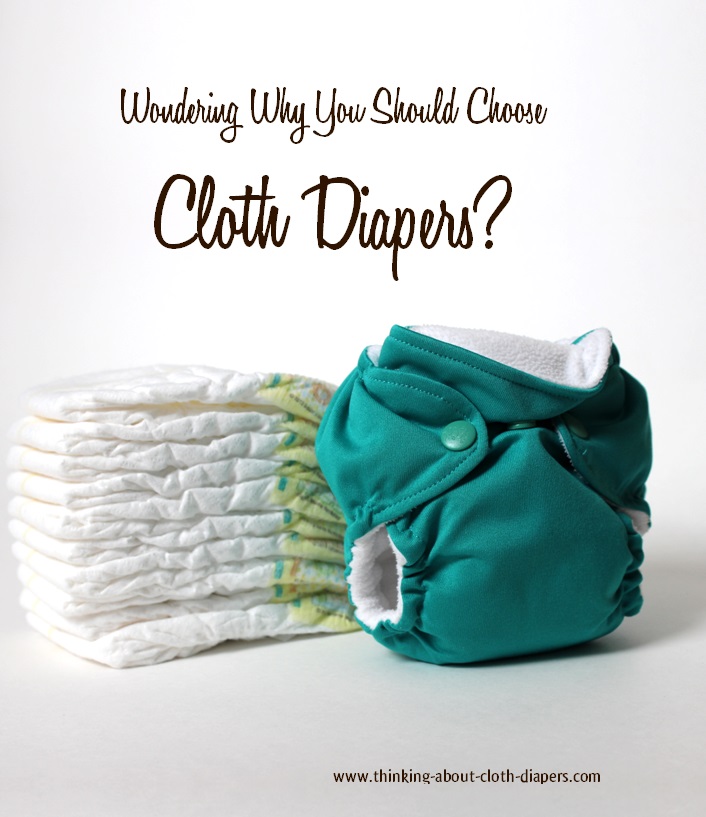 | |
Sponsor Love
